________________________________________________________________________________
Massey Ferguson 230, 235, 240, 245, 250 - Electrical system
Testing
The electrical system on all models is 12 volt, negative grounded
system. Models MF 230, 235, 245 are equipped with Delco-Remy alternator
and starter motor. Massey Ferguson 240, 250 tractors may be equipped
with either Lucas or Perkins (Hitachi) alternator and starter motor.
Before any electrical system service is performed, a thorough check of
condition of battery, cable connections, alternator drive belt and
pulleys should be made. Always disconnect battery leads before
performing any service operations on the tractor electrical system. Do
not connect or disconnect any part of charging system while the engine
is running as damage to voltage regulator could result. When connecting
battery leads, booster battery or battery charger, be sure to observe
correct polarity (positive to positive, negative to negative). Do not
short across or ground any terminals on alternator. Do not attempt to
polarize alternator.
Alternator and regulator (Massey Ferguson 230, 235, 245 testing) - A
Delco-Remy alternator with integral solid state regulator is used on
these tractors. Both 37 amp and 42 amp alternators are available, so be
sure of model when testing. To test alternator output while installed on
tractor, first disconnect battery ground cable. Connect a test ammeter
and voltmeter in circuit at alternator BAT terminal. Connect a carbon
pile across battery and twin on headlights. With engine operating at
moderate speed, adjust carbon pile as required to obtain maximum current
output. Voltage should be approximately 14.5 volts. If ampere output is
within 10 amperes of rated output stamped on alternator frame,
alternator is not defective. If output is not within 10 amperes of rated
output, ground field winding by inserting a screwdriver into test hole
in rear of alternator. If output is now within 10 amperes of rated
output, renew regulator and check field (rotor) winding. If output is
still not within 10 amperes of rated output, disassemble alternator and
check field winding, diode trio, rectifier bridge and stator. If
alternator fails to start charging at all, there may be an open circuit
in wiring to No. 1 terminal of alternator. Voltage must be present at
this terminal to provide initial excitation of field winding to start
alternator charging. A quick field check for an open excitation circuit
is to momentarily place a jumper wire between alternator BAT terminal
and No. 1 terminal with engine running. If alternator starts charging,
when it would not without jumper, an open excitation diode (located in
wiring harness), oil pressure switch (diesel models), or ignition switch
(gasoline models) is indicated.
Alternator and regulator (Models MF 240, 250 With Lucas Alternator
testing) - Check alternator wiring harness continuity, disconnect wiring
connections from alternator and turn start switch to auxiliary position.
Connect a voltmeter between ground and each of the disconnected leads.
Battery voltage should be present at the alternator + (battery) lead and
the IND (warning light) lead. A zero reading indicates open circuit in
wiring or faulty warning light bulb. If an additional ground lead is
used on alternator, check continuity of lead using an ohmmeter. If
voltage is present at + and IND leads, but warning light fails to come
on when leads are reconnected to alternator, a faulty regulator and/or
field (rotor) winding is indicated. To check alternator output, first
disconnect battery ground cable. Disconnect wiring from alternator,
remove cover from rear of alternator, then reconnect wiring leads.
Connect an ammeter between starter solenoid terminal and alternator
output terminal. Connect a voltmeter between output terminal and ground.
Connect a carbon pile across battery terminals. Reconnect battery ground
cable and start engine. Operate engine at 2000 rpm, turn on headlights
and adjust carbon pile as required to obtain maximum current output.
Ammeter reading should be approximately 34 amperes. Adjust carbon pile
so ammeter reading is less than 10 amperes. Voltmeter reading should be
within range of 13.6-14.4 volts. If output is low, use a jumper lead to
short together the F and "-" connections on alternator. If output is now
within specified range, a faulty regulator and/or field winding is
indicated. If output is still low, fault is elsewhere in alternator.
Alternator and regulator (Massey Ferguson 240, 250 With Perkins
Alternator testing) - Check alternator output, connect a voltmeter
between D+ termihal of alternator and ground. Start the engme and
observe voltmeter reading. Voltage should be within range of 13 to 15
volts. If voltmeter readmg exceeds 15.5 volts, voltage regulator is
faulty. If voltmeter reading is less than 13 volts, insert a pin into
small hole near the center of alternator rear housing to ground the F
terminal. if voltage is now within range of 13 to 15 volts regulator is
faulty. If voltage remains less than 13 volts, disassemble alternator
and check field winding, diodes and stator.
Starting motor
Models MF 230, 235, 245 - A Delco-Remy starting motor is used on all
models. Connecl voltmeter and ammeter to starting motor to perform
no-load test. No-Load Test: Volts - 9, Amperes (w/solenoid) - 20-120,
Rpm - 9000-14000. Starter drive pinion clearance is nol adjustable;
however, some clearance must be maintained between end of pinion and
starter drive frame to assure solid contact of the magnetic switch.
Normal pinion clearance should be within the limits of 0.25-3.56 mm
(0.010-0.140 inch). Connect a 6 volt battery to solenoid terminals when
measuring pinion clearance to keep armature from turning.
Massey Ferguson 240, 250 - Lucas starting motor is used on some MF 240,
250 tractors. Connect voltmeter and ammeter to starting motor to perform
no-load test. No-Load Test: Volts - 11, Amperes (max.) - 100, Rpm -
5000-7500. Brush spring tension should be between 11.6-15.5 N (42-55
ounces). Renew brushes if length is less than 8 mm (5/16 inch). When
renewing armature bushings, new bushings should be soaked in engine oil
for 24 hours prior to installation. Tighten the two throughbolls to a
torque of 11 Nm (8 ft-lbs.). Starter drive pinion end clearance is
adjustable. Connect a 6 volt battery to blade terminal on solenoid to
hold pinion in engaged position. While pushing pinion lightly towards
armature to remove any free play in linkage, measure clearance between
end of pinion and the thrust collar. Turn eccentric pin as required to
obtain recommended clearance of 0.13-0.38 mm (0.005-0.015 inch). Tighten
locknut to hold pin in position.
Perkins (Hitachi) starting motor is used on some MF 240, 250 tractors.
Connect voltmeter and ammeter to starting motor to perform no-load test.
No-Load Test: Volts - 12, Amperes (max.) - 120, Rpm - 4000-7500.
Armature commutator minimum allowable diameter is 40 mm (1.575 inches).
Maximum allowable runout for armature and commutator is 0.10 mm (0.004
inch). Depth of insulation below surface of commutator should be
0.20-0.80 mm (0.008-0.031 inch). Minimum allowable brush length is 14 mm
(0.551 inch). Armature end play should be 0.05-0.30 mm (0.002-0.012
inch). If end play exceeds 0.30 mm (0.012 inch), install an additional
thrust washer. Starter drive pinion end clearance is adjustable. Connect
6 volt battery to solenoid S terminal to hold pinion in engaged
position. Push pinion lightly towards armature to remove free play in
linkage, then measure clearance between face of pinion gear and the
pinion stop. Recommended clearance is 0.3-1.5 mm (0.012-0.060 inch). Add
or remove spacer washers as required to obtain desired clearance.
________________________________________________________________________________
________________________________________________________________________________________
________________________________________________________________________________________
________________________________________________________________________________________
________________________________________________________________________________________
________________________________________________________________________________________
________________________________________________________________________________________
________________________________________________________________________________________
________________________________________________________________________________________
________________________________________________________________________________________
________________________________________________________________________________________
________________________________________________________________________________________
________________________________________________________________________________________
________________________________________________________________________________________
________________________________________________________________________________________
________________________________________________________________________________________
________________________________________________________________________________________
________________________________________________________________________________________
________________________________________________________________________________________
________________________________________________________________________________________
________________________________________________________________________________________

 SPECS
SPECS LOADERS
LOADERS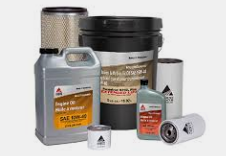 MAINTENANCE
MAINTENANCE PROBLEMS
PROBLEMS MF 1523
MF 1523 MF 1531
MF 1531 MF 135
MF 135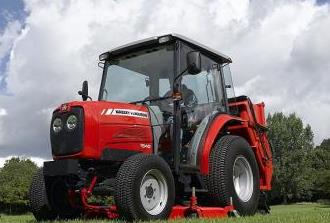 MF 1547
MF 1547 MF 1635
MF 1635 231
231 231S
231S 235
235 240
240 241
241 255
255 265
265 274
274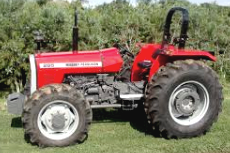 285
285 375
375 916X Loader
916X Loader 921X Loader
921X Loader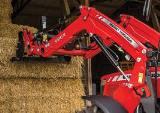 926X Loader
926X Loader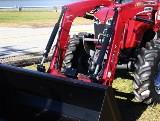 931X Loader
931X Loader 936X Loader
936X Loader 941X Loader
941X Loader 946X Loader
946X Loader 951X Loader
951X Loader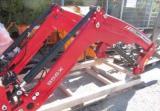 956X Loader
956X Loader 988 Loader
988 Loader 1655
1655 GS1705
GS1705 1742
1742 2635
2635 4608
4608 1080
1080 1100
1100 2615
2615 3050
3050 3060
3060 4708
4708 5455
5455 5450
5450 5610
5610 5613
5613 DL95 Loader
DL95 Loader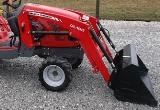 DL100 Loader
DL100 Loader DL120 Loader
DL120 Loader DL125 Loader
DL125 Loader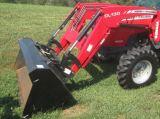 DL130 Loader
DL130 Loader DL135 Loader
DL135 Loader DL250 Loader
DL250 Loader DL260 Loader
DL260 Loader L90 Loader
L90 Loader L100 Loader
L100 Loader 6499
6499 7480
7480 7618
7618 7726
7726 1533
1533 2604H
2604H 2607H
2607H 4455
4455 4610M
4610M 4710
4710 L105E Loader
L105E Loader L210 Loader
L210 Loader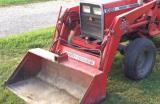 1014 Loader
1014 Loader 1016 Loader
1016 Loader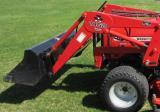 1462 Loader
1462 Loader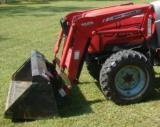 1525 Loader
1525 Loader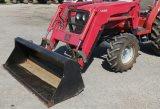 1530 Loader
1530 Loader 232 Loader
232 Loader 838 Loader
838 Loader 848 Loader
848 Loader 5712SL
5712SL 6713
6713 6715S
6715S 7475
7475 7615
7615 7716
7716 7724
7724 8240
8240 8650
8650 8732
8732 246 Loader
246 Loader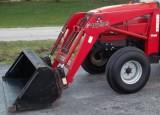 1036 Loader
1036 Loader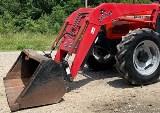 1038 Loader
1038 Loader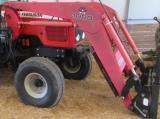 1080 Loader
1080 Loader 856 Loader
856 Loader